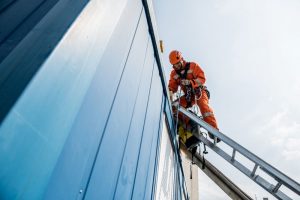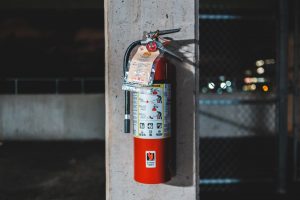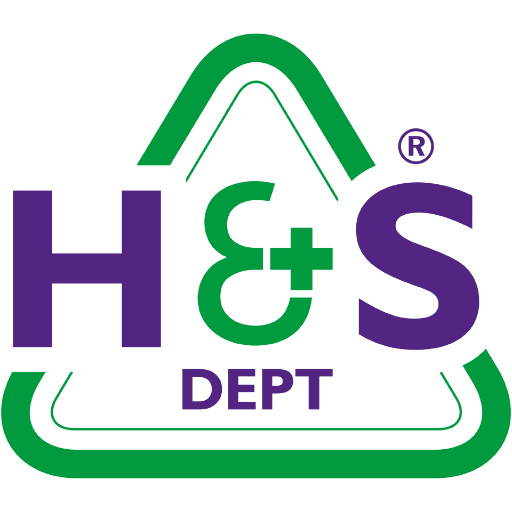How to deal with near misses
in the workplace

The most worrying of these was the derailment of an engineering train. The other four incidents included the unsafe use of a saw, the cutting of a potentially dangerous wire and a test train being sent in the wrong direction.
This is not to say that Crossrail is failing to protect its employees. In fact, Crossrail has an improving safety record with no reportable accidents in February at all. This story just goes to show that near misses can happen in any workplace. The important thing is responding to them correctly. So, what is a near miss?
The HSE defines a near miss as an event that did not cause harm but had the potential to do so. In this case, “harm” includes both physical injury and illness. An example of a near miss would be someone losing their footing at height but managing to steady themselves.
The reporting of workplace injuries and accidents is a legal requirement under RIDDOR (The Reporting of Injuries, Diseases and Dangerous Occurrences Regulations 2013).
Generally speaking, you do not have to report near misses to the HSE. However, some near misses may also fall into the category of “dangerous occurrences”. These are specific incidents which must be reported under RIDDOR. A full list of these can be found on the HSE website.
Even where it may not be a legal requirement, recording near misses has several advantages for employers:
- Recording near misses allows you to spot patterns. Several near misses in the same area are a sure sign that something is wrong.
- Investigating near misses allows you to avoid more serious incidents by implementing the necessary safety measures at an earlier stage. Averting potential accidents will improve efficiency and could even save lives.
- Near misses can form the basis of safety training. Relating safety measures to a recent near miss can act as a wake-up call for employees, ensuring that they pay attention.
If you would like to introduce an internal near miss reporting policy to improve your culture of health and safety, get in touch.
Do you operate in a high-risk sector
for COVID-19?

Despite these findings, the IIAC stopped short of recommending that COVID-19 be added to the list of “prescribed diseases” covered by Industrial Injuries Disablement Benefit. This is because there is not currently enough data to prove a definite link between contracting COVID-19 at work and long-term disability.
Despite the fact that COVID-19 will not be classified as an occupational disease for the time being escalating further the response to it, it is essential you go as far as you reasonably can to minimise the danger if you operate in these sectors.
If you work in a high-risk sector, you should be carrying out regular, thorough risk assessments. These should acknowledge the heightened risk that you and your employees face as well as setting out measures to reduce the danger.
Many of these measures will already be familiar to you, but once the policy has been devised it is particularly important to ensure you have a culture of health and safety compliance within your organisation. Check in with your staff regularly to make sure that policies are being followed.
Section 44 extended to workers

Section 44 of the Employment Rights Act 1996 states that an employee may leave the workplace or refuse to attend work if they feel that their safety is under threat. As long as this belief is genuine, the employer cannot punish them for their actions.
A recent High Court ruling has extended the same protection to those with “worker” status. From 31st May, both employees and workers will have the right not to be penalised if they leave or refuse to return to the workplace. For this protection to apply, they must believe that the danger is serious and imminent, and cannot be reasonably averted.
This situation is, of course, best avoided. Reviewing health and safety policies to ensure they reflect this change is a sensible first step, followed by clear communication with your whole team. If an employee or worker still feels unsafe and acts under section 44, you’ll need to work with them on health and safety to find an appropriate way forward. Any detriment they suffer could expose you to litigation. If you want to discuss this in more detail, please get in touch.
Unlimited fines for some breaches
of fire safety regulations

At the same time, the Building Safety Bill is being developed, which contains further fire safety measures. These aim to improve fire safety risk assessments and increase accountability. One thing in particular to highlight is that anyone who impersonates or obstructs a fire safety officer can now face an unlimited fine as could those breaching fire safety regulations laid out in the FSO.
The fire and building safety bills have relevance to commercial as well as residential premises, so it’s important to know your responsibilities. As well as raising the quality of fire risk assessments and the proficiency of people completing them, they intend that for regulated buildings, important fire safety information will in future be retained throughout their lifespan.
Mythbusters

The players at a rugby club were told that they couldn’t play in wet and muddy conditions for health and safety reasons. The reality was a little more complex. The club had recently suffered serious flooding, meaning that a proper assessment was needed before play could resume. The risk of contamination from flood water was likely to have been as much of a factor as the risk of injury. Simply blaming “health and safety” meant that the players didn’t receive a satisfactory explanation of what was happening.
In an even stranger case, a golf club refused to post the minutes of its committee meeting on a bulletin board “for health and safety reasons”. It is possible that they had confused data privacy with health and safety but, more likely, it was another attempt to shift the blame for an unpopular decision. We call that foul play.

